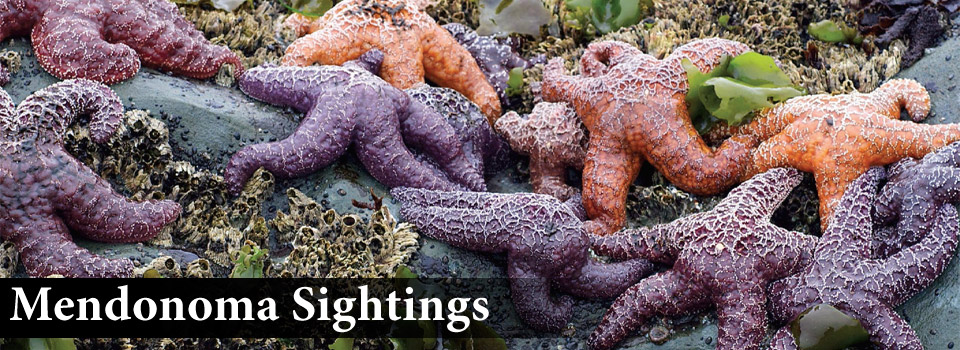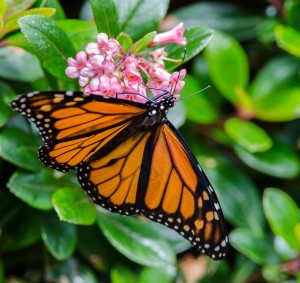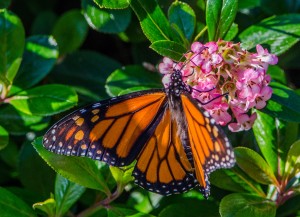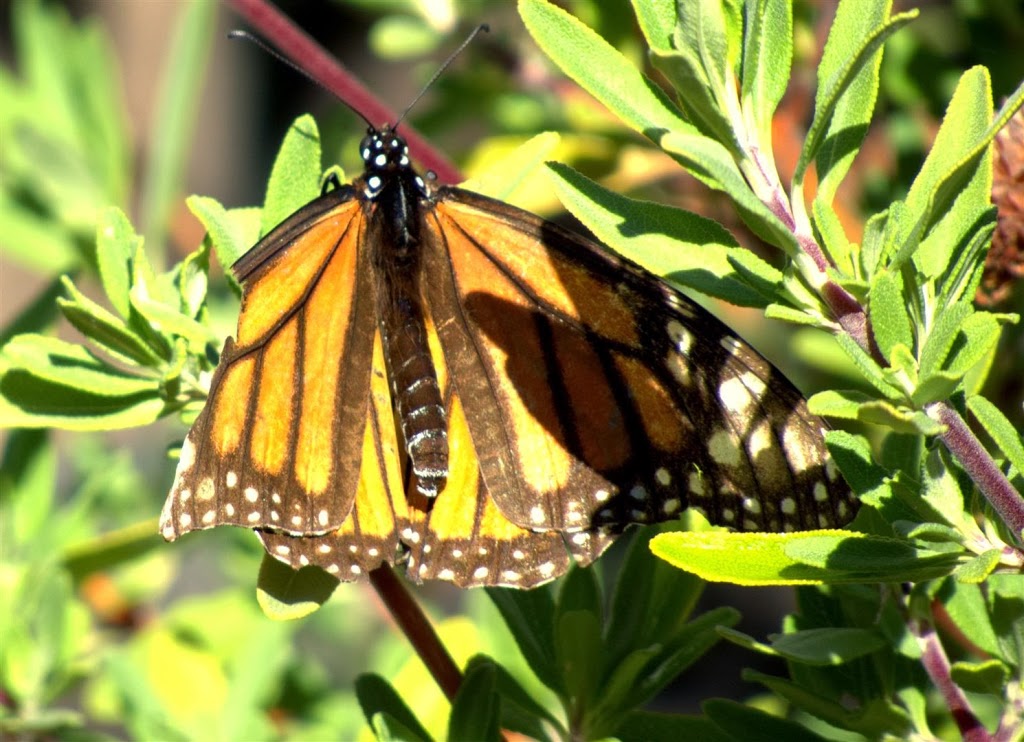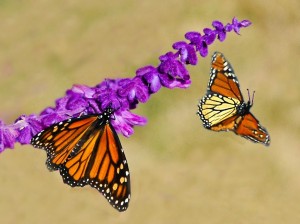Beautiful Monarch Butterflies migrate through the Mendonoma Coast in the autumn. Several weeks ago Siegfried Matull captured this photo of two Monarchs feeding on his sage plant.
These Monarchs are of the Methuselah generation, the generation that lives for seven months or so.
Barbara Rice studies these butterflies. She wrote, “The overwintering Monarchs, which travel through our area in the fall, will not be laying eggs on their way. In the spring they head inland to look for milkweed and lay the first eggs of the three to four generations. Native milkweed species in Sonoma County are found further inland, such as Lake Sonoma.”
What is important here on the Coast is to plant native nectar plants for butterflies. Barbara advises that long blooming species in the Mint – Sage comes to mind - and Aster families are beneficial. Even better are our native Manzanitas, as they bloom in the winter. Erysimum, also called Wallflower, is very beneficial.
Barbara adds, “Coyote Mint is a great butterfly and hummingbird plant. In a garden you can keep it blooming a long time if you ‘deadhead’ the spent flowers. Coast Goldenrod is also a good late fall Monarch plant and two local Manzanitas – Hairy Manzanita and Fort Bragg Manzanita.”
Monarch Butterflies are down in numbers due to pesticide use and loss of habitat. Anything we can do to help them is well worth doing.
Thanks to Siegfried for allowing me to share his photo with you here. And thanks to Barbara for her good advice.
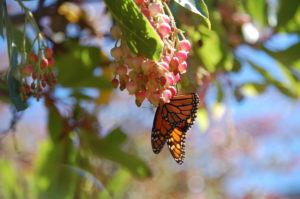 The butterflies we are seeing now are the long-lived Methuselah generation. They live about seven months, and they are the ones who migrate south.
The butterflies we are seeing now are the long-lived Methuselah generation. They live about seven months, and they are the ones who migrate south.